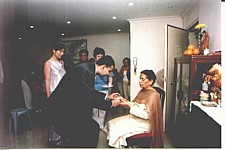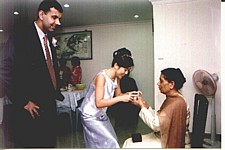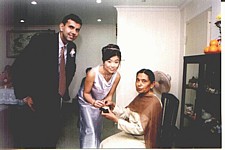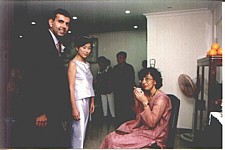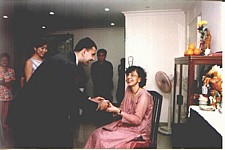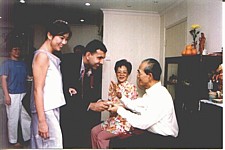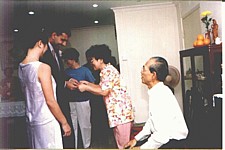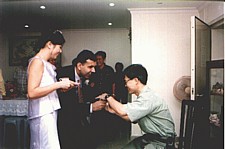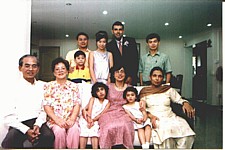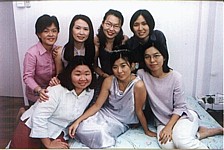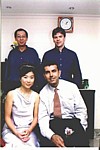The Tea Ceremony
Many believe that the Chinese matrimonial tea ceremony probably has its origins in the Song Dynasty (960-1127), a period known mostly for its refinement of tea. There are several reasons why tea is used in this traditional ceremony. The most practical reason to use tea is that not every one can consume alcohol. The choice of tea varies region to region and personal preference. First of all the bride and groom will kowtow three times. Once, to pay their respects to the Celestial Spirits, second, to pay their respects to the family ancestors and third, to pay their respects to the Earthly Spirits. The bride and groom will then kowtow to the groom's parents. The groom offers his father a cup of tea with both of his hands and then he will offer his mother a cup of tea. The groom's mother will offer the son a hong bao, a red envelope which will contain either money or jewelry. The bride repeats what the groom has done. Often times, when the daughter-in-law and the son serve the parents tea, a couple of red dates are added to the tea. This serves as a symbolic wish to the parents for prosperity and good fortune. Acting as an intermediary, the "Lucky Woman" will offer a cup of tea, on behalf of the Groom's mother, a cup of tea that will contain two lotus seeds. Lotus seeds symbolize the parents' wish for the bride to bear sons every year to continue the family name. A "lucky woman" is married with a living husband and with one or more very healthy sons. Nowadays, parents will do this for tradition's sake and/or as a wish for the new family to bear healthy children. The mother-in-law does not make this cup of tea. After the parents are served, the couple will repeat these steps with other senior members of their family and circle of friends. Upon completion of serving tea to all the necessary people, the couple will kowtow to one another as an act or reciprocal respect for one another. Finally, they get to get off their knees!


